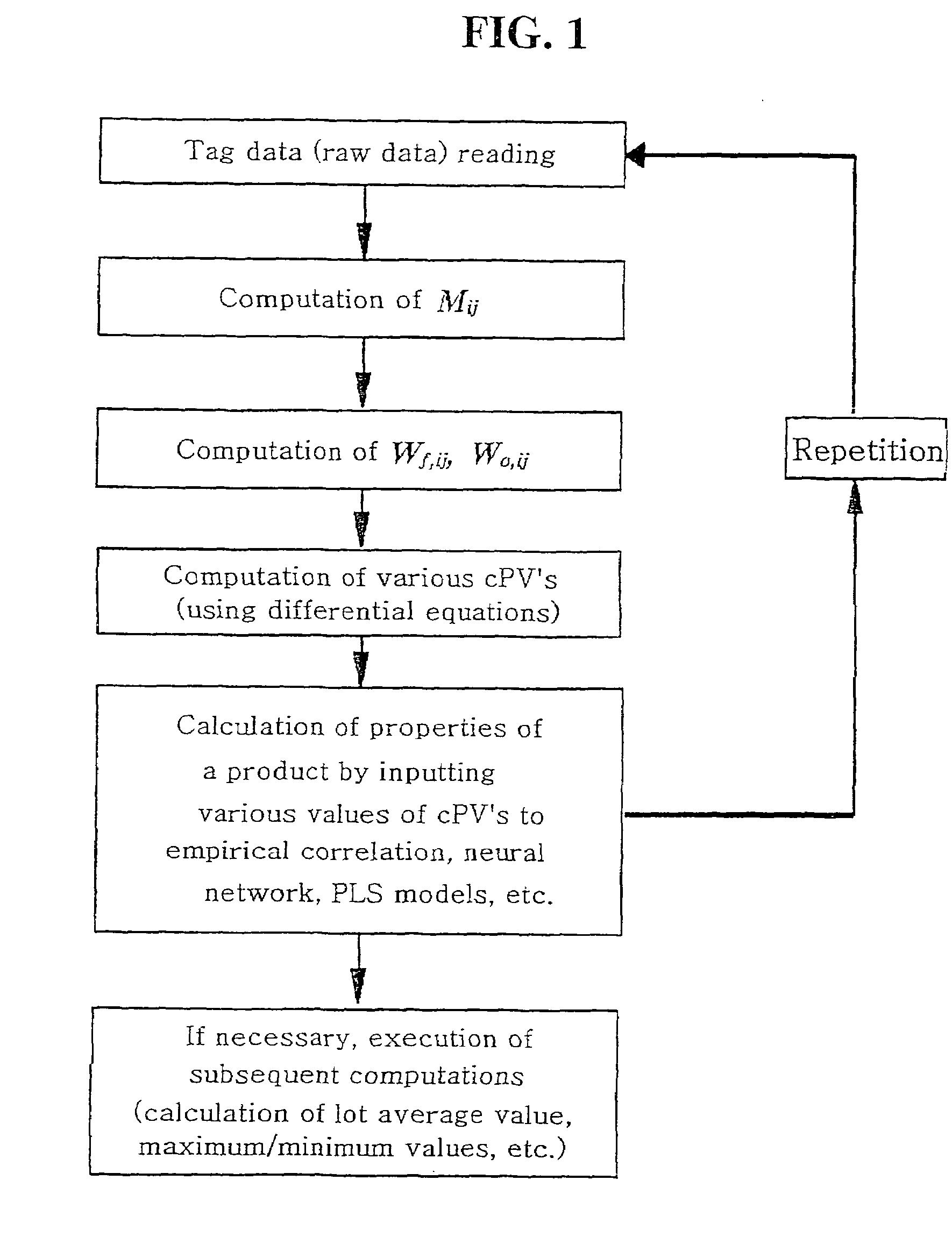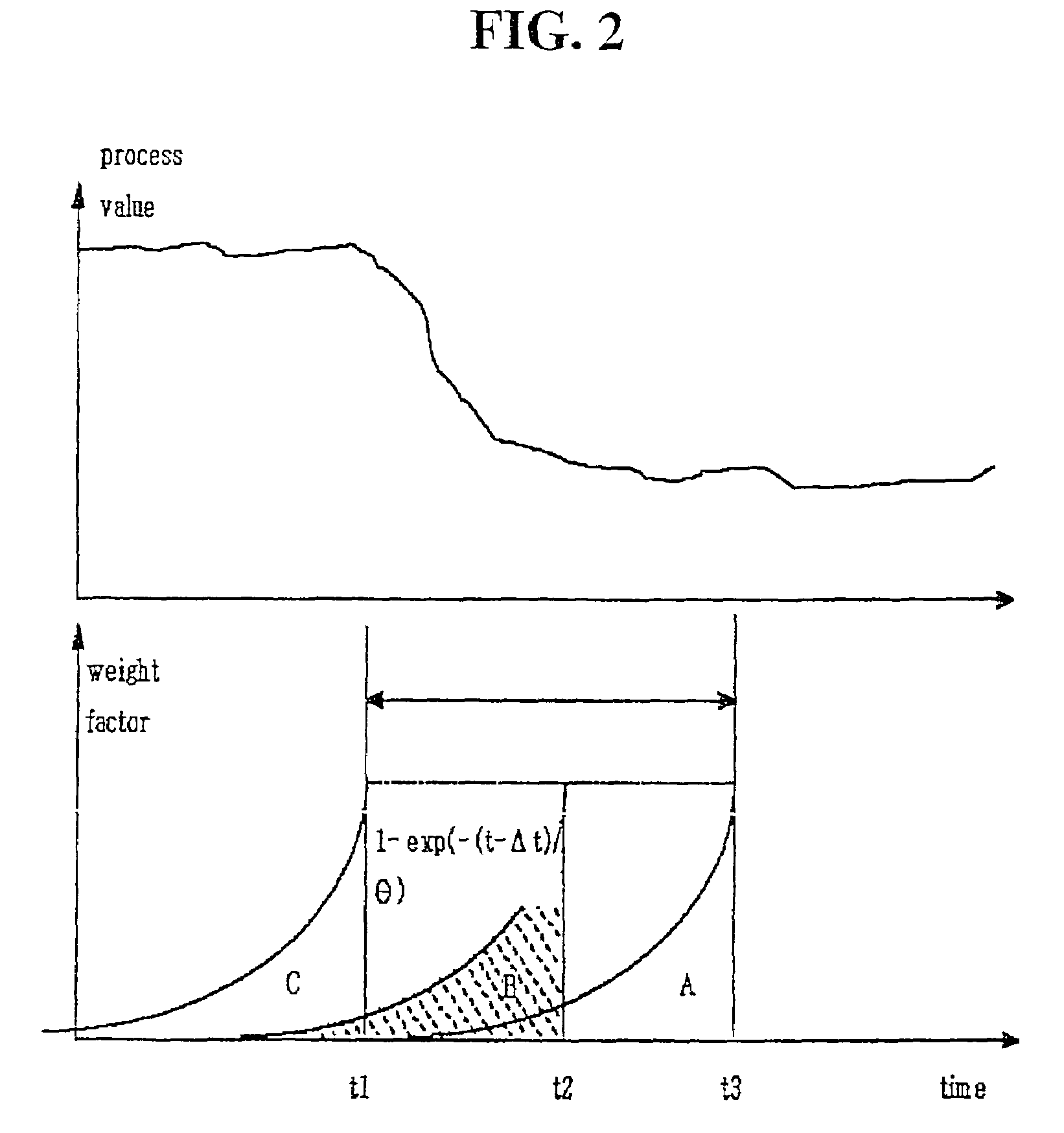Method of estimating the properties of a polymer product
a polymer product and property technology, applied in chemical methods analysis, process and machine control, instruments, etc., can solve problems such as large differences from the actual analysis value, claims or complaints from end users, and sometimes inconsistent operations
- Summary
- Abstract
- Description
- Claims
- Application Information
AI Technical Summary
Benefits of technology
Problems solved by technology
Method used
Image
Examples
Embodiment Construction
[0020]The present invention is described in further detail with an example as below: Nevertheless, it is described here for illustrative purposes only and does not limit the present invention in any manner.
[0021]FIG. 1 is a bloc diagram, which shows the method of estimating the properties of a polymer product according to the present invention. FIG. 1 shows the process of computing cPV's in the reactors by stage with respect to the final product discharged at a certain time period with a given operational condition of each stage. This computation was made with due consideration of residence time distribution.
[0022]The process of computation shown in FIG. 1 is described as below, which computes, with due consideration of residence time distribution, cPV's in the reactors by stage with respect to the final product discharged at a certain time period.
[0023]First, the raw data such as reactor temperature, pressure, and concentration were read through a controller, etc. From the raw data...
PUM
| Property | Measurement | Unit |
|---|---|---|
| residence time | aaaaa | aaaaa |
| residence time | aaaaa | aaaaa |
| residence time distribution | aaaaa | aaaaa |
Abstract
Description
Claims
Application Information
 Login to View More
Login to View More - R&D
- Intellectual Property
- Life Sciences
- Materials
- Tech Scout
- Unparalleled Data Quality
- Higher Quality Content
- 60% Fewer Hallucinations
Browse by: Latest US Patents, China's latest patents, Technical Efficacy Thesaurus, Application Domain, Technology Topic, Popular Technical Reports.
© 2025 PatSnap. All rights reserved.Legal|Privacy policy|Modern Slavery Act Transparency Statement|Sitemap|About US| Contact US: help@patsnap.com



